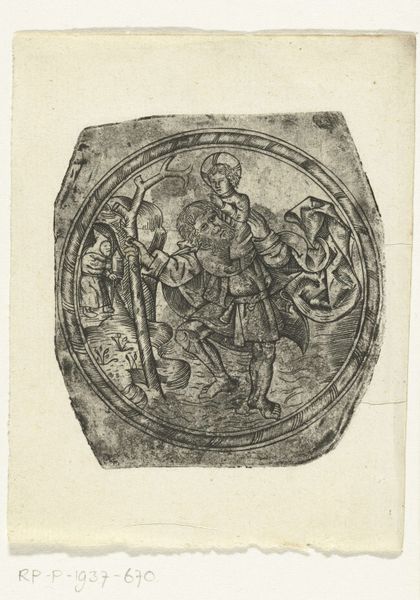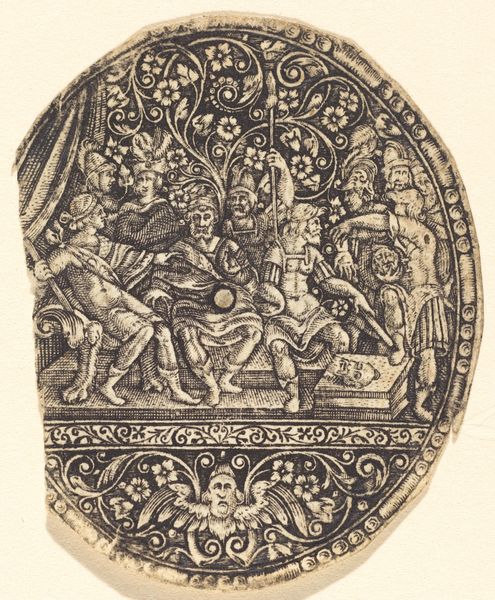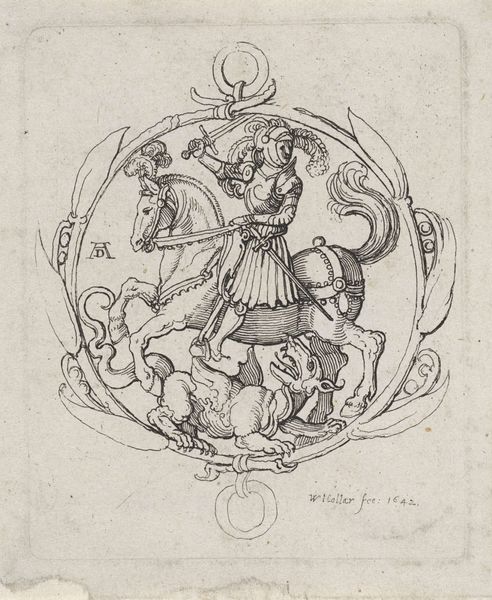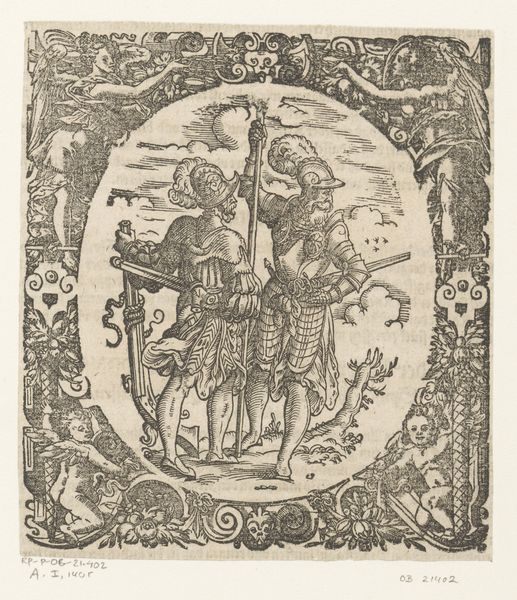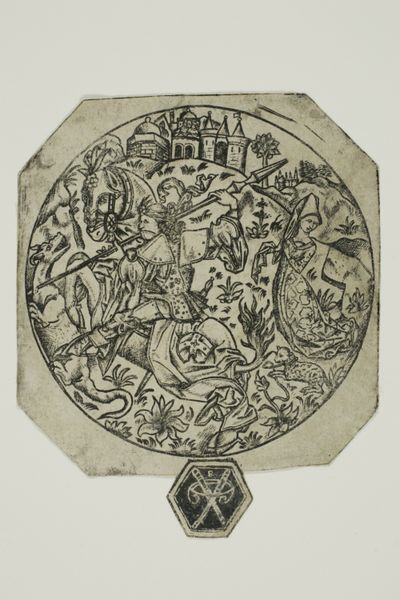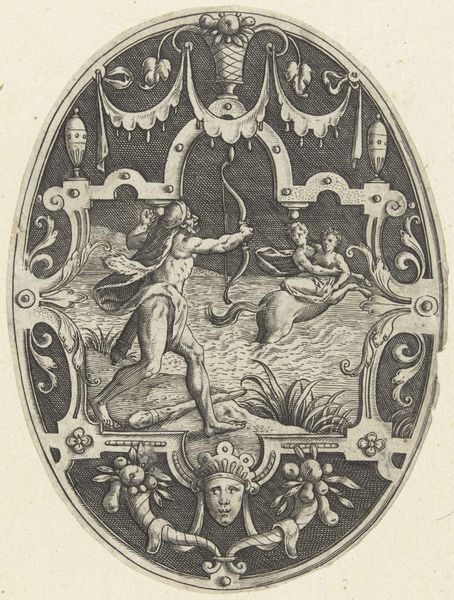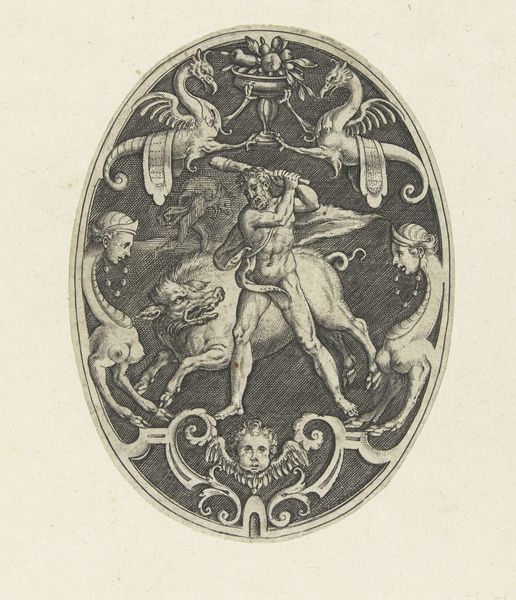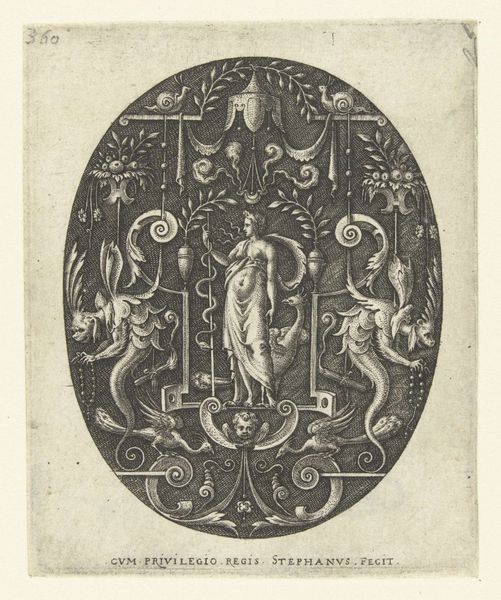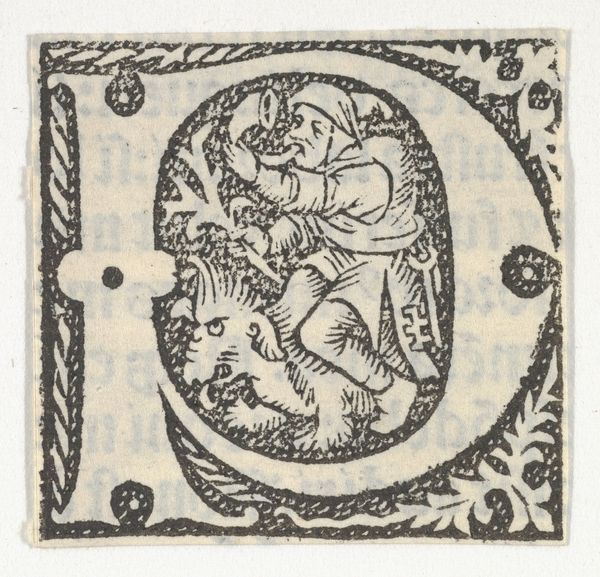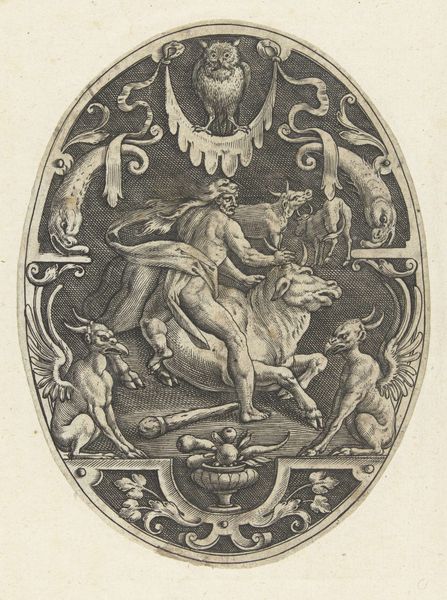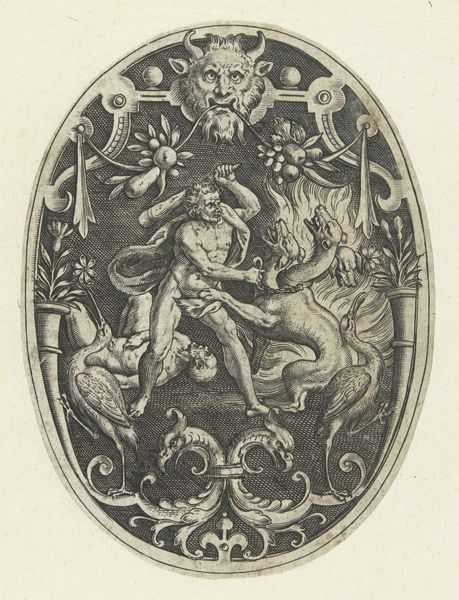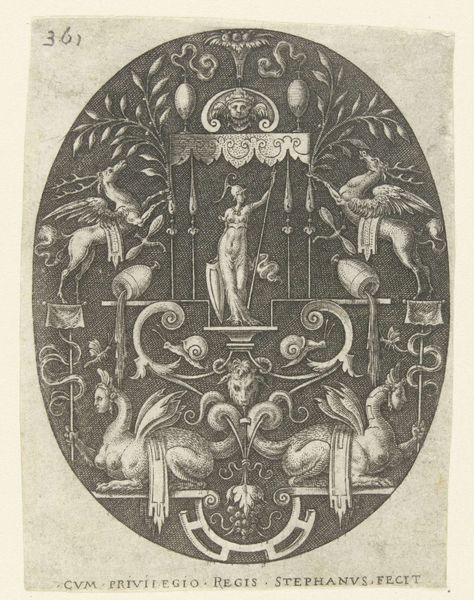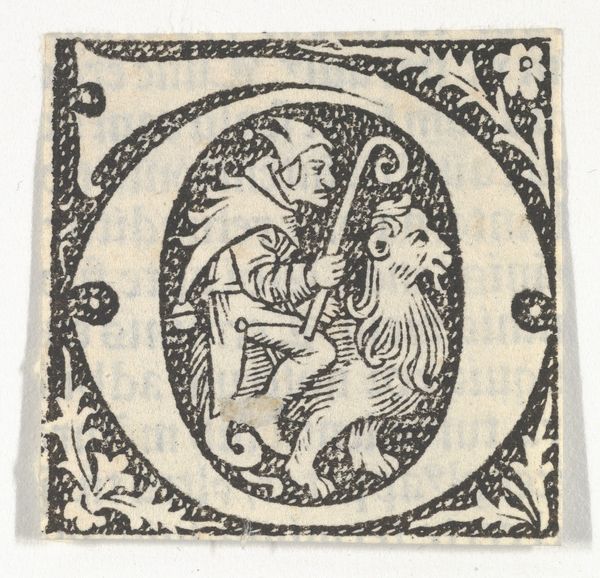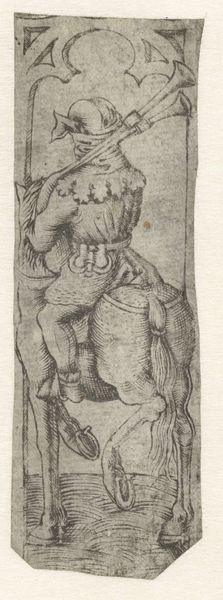
drawing, ink, engraving
#
drawing
#
medieval
#
pen sketch
#
figuration
#
ink
#
engraving
Dimensions: height 69 mm, width 64 mm
Copyright: Rijks Museum: Open Domain
Curator: Let's delve into this engraving, believed to have been created anonymously sometime between 1550 and 1600. The piece is entitled "Heilige Christoffel," which translates to Saint Christopher. Editor: My immediate impression is one of weight—the dense cross-hatching, the hunched figure—it feels substantial, burdened almost. It’s rendered simply, but with a tangible sense of pressure and determined forward movement. Curator: Indeed. The figure of Saint Christopher carrying the Christ Child has rich socio-political implications when we consider the history of labor and service. His story is about taking on the seemingly impossible task and transforming it into a sacred duty. In the Medieval period, Saint Christopher came to be revered as a patron saint for travelers—particularly significant for societies marked by burgeoning trade routes. Editor: What strikes me formally is the contained energy. The composition, sealed within a crude circle, is balanced. We see the texture of the engraving; the way the lines are deployed gives form to the man’s clothing, the ripples in his cloak, even the somewhat crudely drawn Christ Child. The artist is adept at utilizing a single medium to create differentiation and dynamism. Curator: His popularity also resonates with anxieties surrounding plague and sudden death. Carrying the Christ Child safely across the river embodies the hope for protection and divine intervention during times of crisis. This work then also speaks to collective trauma, especially during plague outbreaks. Editor: The circle motif reinforces that feeling of protection. Though roughly rendered, it confines the scene. Do you find that that particular circular boundary speaks to your understanding of the work's role during times of societal trauma? Curator: I see it more as representing the closed religious and cultural milieu of the time. The saint's function within the historical context as protector against disease speaks not only to his immediate efficacy but also the limited remedies and recourse that the population possessed during the historical moment this engraving was created. Editor: I find myself contemplating the lines – how the stark contrasts evoke depth and shadow and imply a landscape—and it is through understanding form and the image itself that helps us arrive at how it connects with social practice, doesn't it? Curator: Of course. The value in looking at this print of Saint Christopher lies precisely in this interwoven understanding—to recognize it as both a skilled example of ink on paper and a potent symbol that intersected deeply with societal fears and collective hopes during its time. Editor: It has a powerful and evocative simplicity that transcends time.
Comments
No comments
Be the first to comment and join the conversation on the ultimate creative platform.
